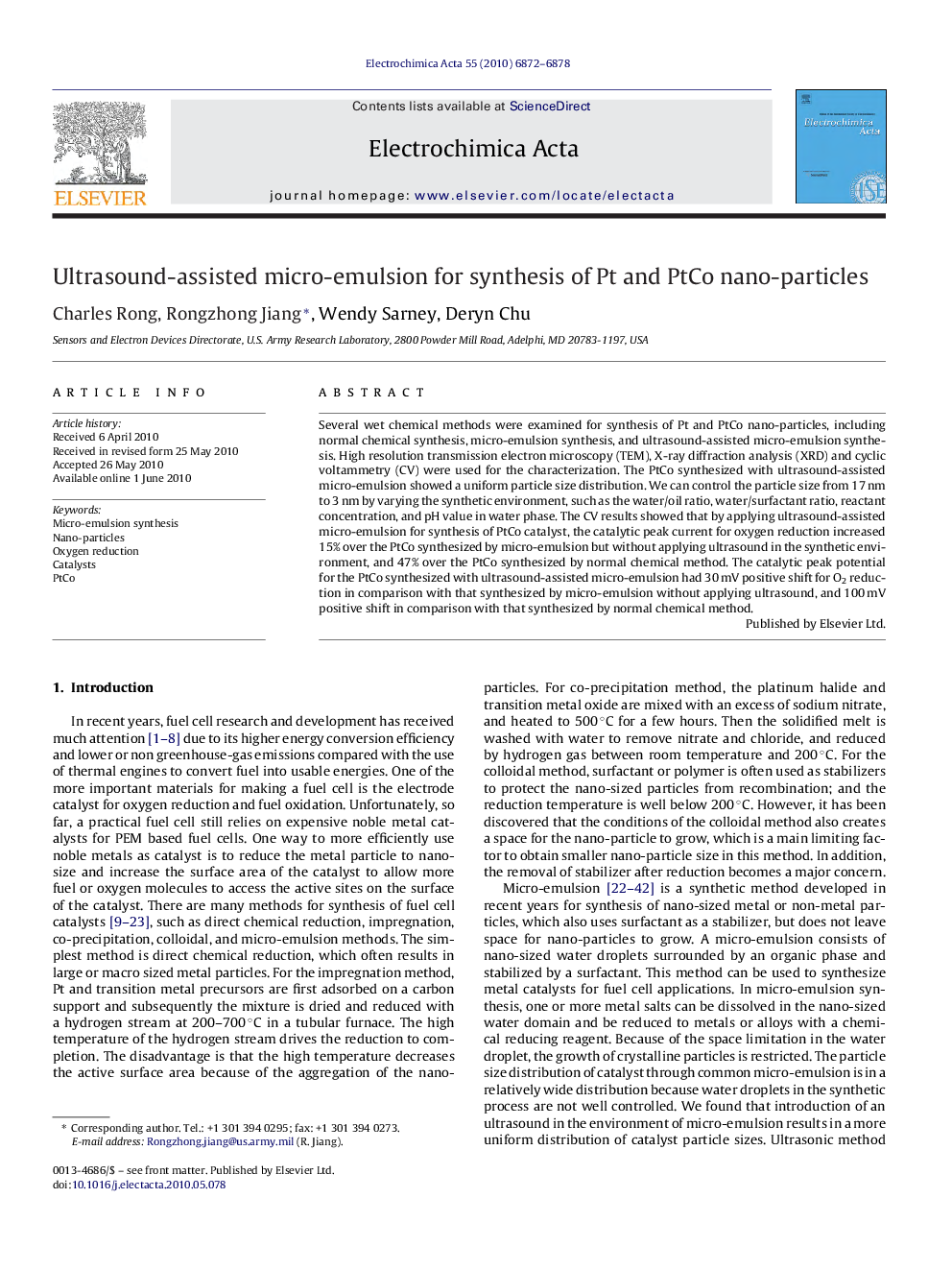| Article ID | Journal | Published Year | Pages | File Type |
|---|---|---|---|---|
| 192247 | Electrochimica Acta | 2010 | 7 Pages |
Several wet chemical methods were examined for synthesis of Pt and PtCo nano-particles, including normal chemical synthesis, micro-emulsion synthesis, and ultrasound-assisted micro-emulsion synthesis. High resolution transmission electron microscopy (TEM), X-ray diffraction analysis (XRD) and cyclic voltammetry (CV) were used for the characterization. The PtCo synthesized with ultrasound-assisted micro-emulsion showed a uniform particle size distribution. We can control the particle size from 17 nm to 3 nm by varying the synthetic environment, such as the water/oil ratio, water/surfactant ratio, reactant concentration, and pH value in water phase. The CV results showed that by applying ultrasound-assisted micro-emulsion for synthesis of PtCo catalyst, the catalytic peak current for oxygen reduction increased 15% over the PtCo synthesized by micro-emulsion but without applying ultrasound in the synthetic environment, and 47% over the PtCo synthesized by normal chemical method. The catalytic peak potential for the PtCo synthesized with ultrasound-assisted micro-emulsion had 30 mV positive shift for O2 reduction in comparison with that synthesized by micro-emulsion without applying ultrasound, and 100 mV positive shift in comparison with that synthesized by normal chemical method.
